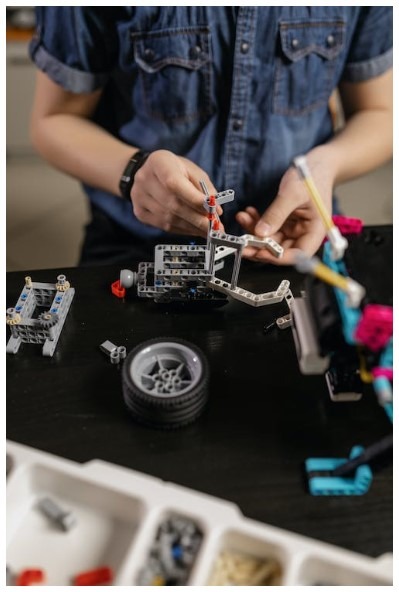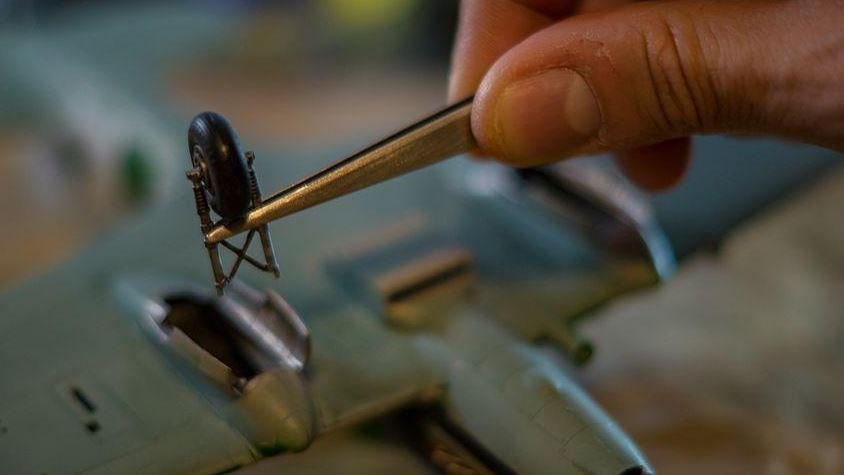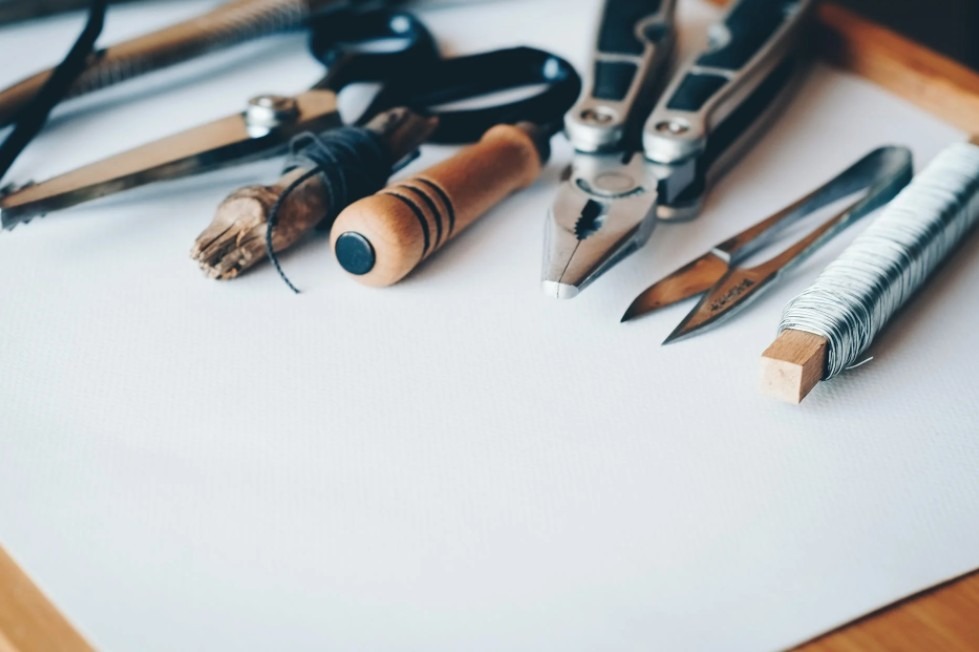What Is the Purpose of Coil Pots?
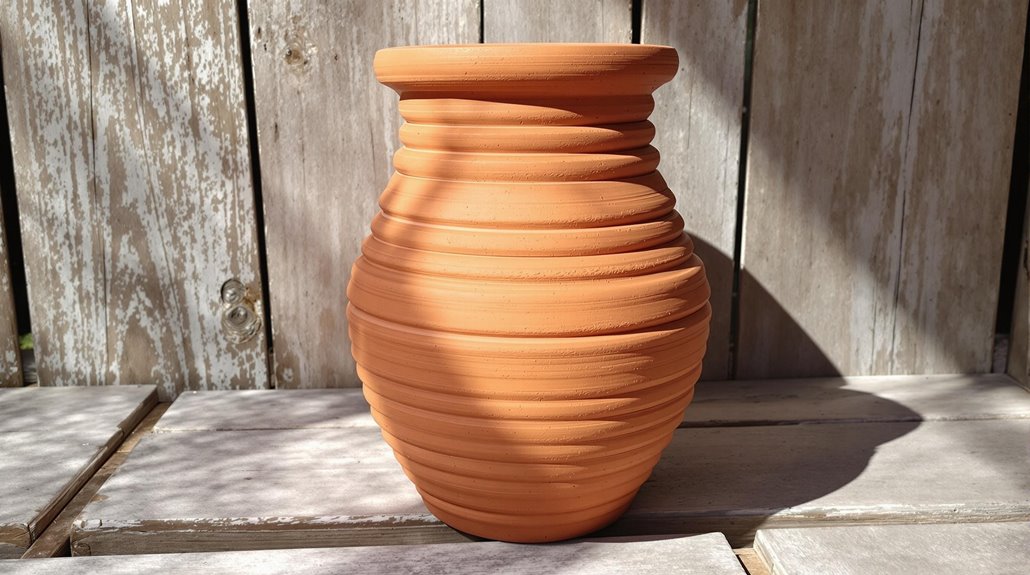
Coil pots serve as essential vessels for storing, transporting, and preparing food and water - a practice that's spanned over 10,000 years of human civilization. You'll find these versatile containers in cultures worldwide, from ancient Greece to the American Southwest. The technique of stacking and joining clay coils lets you create stable, durable pots of various sizes and shapes. This fundamental pottery method offers endless possibilities for both functional and artistic expression.
The Ancient Art of Coil Building
While many modern pottery techniques have emerged over time, coil building remains one of humanity's oldest and most versatile methods for creating ceramic vessels. You'll find evidence of this technique spanning thousands of years, from ancient civilizations to Native American pottery traditions that continue today.
When you make a coil pot, you're practicing one of the most fundamental clay-working methods - rolling clay into long, snake-like coils and carefully stacking them to build your vessel's walls. This technique emerged as a significant advancement in early pottery-making, allowing you to create larger, more stable pots than other methods.
From the Americas to the Old World, coil building has proven itself as the go-to method for crafting everything from storage vessels to ceremonial pottery. Similar to how artists study famous landmarks' characteristics when creating miniature models, potters must carefully examine and understand the properties of their materials to build successful coil pots.
Historical Significance Across Cultures
Although pottery techniques vary worldwide, coil building stands as a unifying thread across human civilizations. You'll find evidence of coil pottery spanning thousands of years, from ancient Greece to the American Southwest, where Native people developed distinctive Southwest pottery traditions that continue to inspire artists today.
The significance of this pottery technology can't be understated - it revolutionized how early cultures created vessels. By using clay coils, artisans could construct larger, more stable containers than ever before. This advancement in pottery making preceded the potter's wheel by millennia, allowing civilizations to develop unique artistic styles and practical solutions for storage and cooking.
The technique's versatility enabled craftspeople to create everything from simple functional vessels to elaborate ceremonial pieces, each reflecting their culture's artistic values and practical needs. Like the wooden ship models of today, these ancient pottery techniques required significant skill to produce accurate forms and shapes.
Basic Techniques and Materials
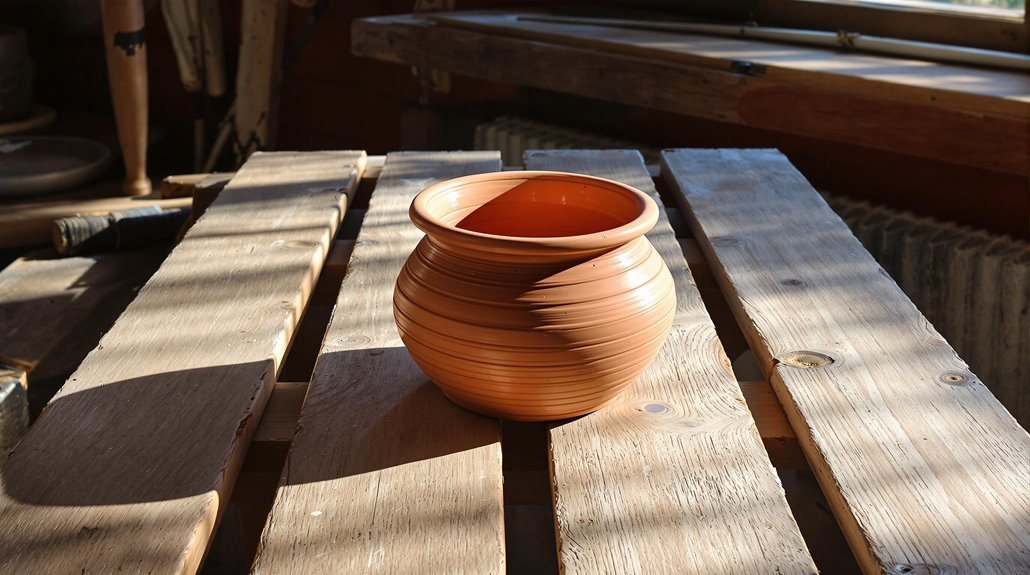
Every coil pot begins with the fundamental process of rolling clay into long, rope-like strips. To make coil pottery, you'll need a suitable clay body that's pliable enough to form consistent coils. Unlike a simple pinch pot, when you make a coiled pot, you'll stack these coils on top of each other to build up the vessel's walls to your desired height.
The key to successful coil pots lies in properly joining each layer. You'll score the surfaces where coils meet, apply slip, and blend them together using techniques like coil and scrape or paddle and anvil. This method gives you exceptional control over your vessel's final shape - you can make pottery with varying wall thicknesses, create dramatic curves, or add distinctive features that wouldn't be possible with other handbuilding techniques. Similar to how cast polyurethane resin provides flexibility in model-making, coil building allows artists to create custom shapes with relative ease.
Structural Advantages of Coil Construction
The structural advantages of coil construction stem directly from its layered building process. When you're attaching a coil to build your pot, you'll notice how each clay coil adds strength and stability. The compression pinch technique you use on each side of the coil creates a solid bond, preventing weak spots in the pot walls.
The base of the pot remains stable as you build upward, preventing warping. One coil at a time construction allows you to pause and check structural integrity. The layered technique naturally reinforces weak points and helps distribute weight evenly.
This methodical building process guarantees your pot will be sturdy and durable, capable of withstanding both the firing process and regular use.
- You can control the thickness of your pot walls by adjusting how you coil into the pot.
- The base of the pot remains stable as you build upward, preventing warping.
- One coil at a time construction allows you to pause and check structural integrity.
- The layered technique naturally reinforces weak points and helps distribute weight evenly.
Design Flexibility and Creative Expression
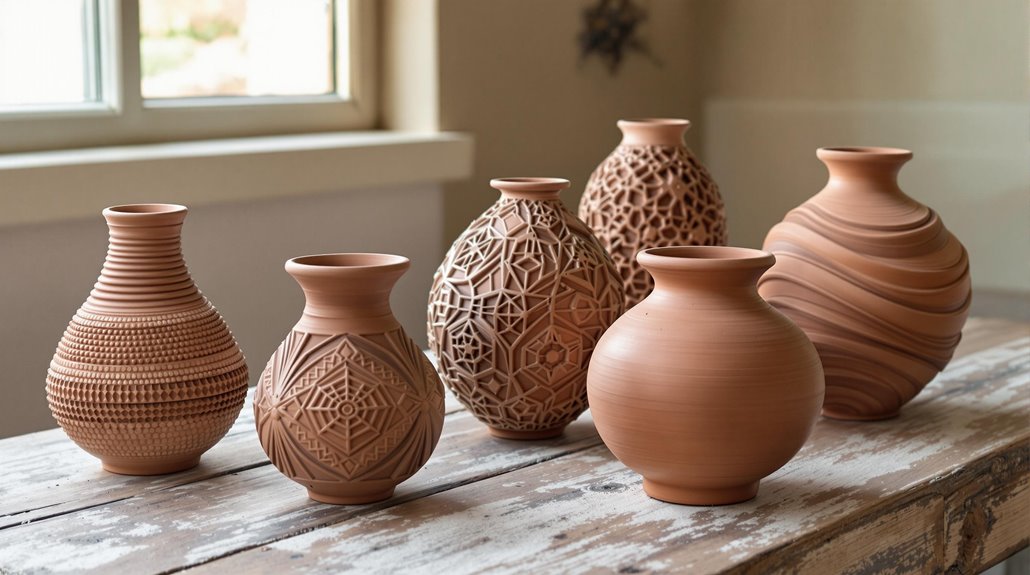
Building with coils offers limitless creative possibilities, letting you shape vessels that defy traditional pottery constraints. This pottery method allows you to metamorphose a simple lump of clay into elaborate forms with unique characteristics.
When you make a coil pot, you'll uncover how each coil gets integrated to create bulging walls, dramatic curves, or tall structures that showcase your artistic vision.
You can enhance your work's aesthetic appeal using a rib tool or wooden paddle to add textures and patterns to the wet clay surface. This traditional American handbuilding technique gives you complete control over your vessel's final form, whether you're crafting functional pieces or experimental art.
The versatility of coil construction enables you to incorporate sculptural elements and decorative details that make each piece distinctly yours.
Traditional Methods in Modern Practice
Modern ceramic artists continue to adopt coil pottery's time-honored traditions while pushing creative boundaries in contemporary practice. You'll find traditional methods, like those used in New Mexico by Native American potters, being taught alongside innovative techniques in studios worldwide. If you're interested in learning, you'll need to know how to make even lines from a ball of clay while supporting the inside of the pot with an anvil on the inside. While the pottery seems simple, it's rich in cultural significance and practical application.
- Traditional coil and scrape methods remain crucial in contemporary Native American pottery
- Art schools incorporate coil-building as a fundamental ceramic technique
- Modern artists blend traditional coiling with innovative construction methods
- The technique allows both beginners and experts to investigate diverse forms and textures
Cultural Preservation Through Coil Pottery
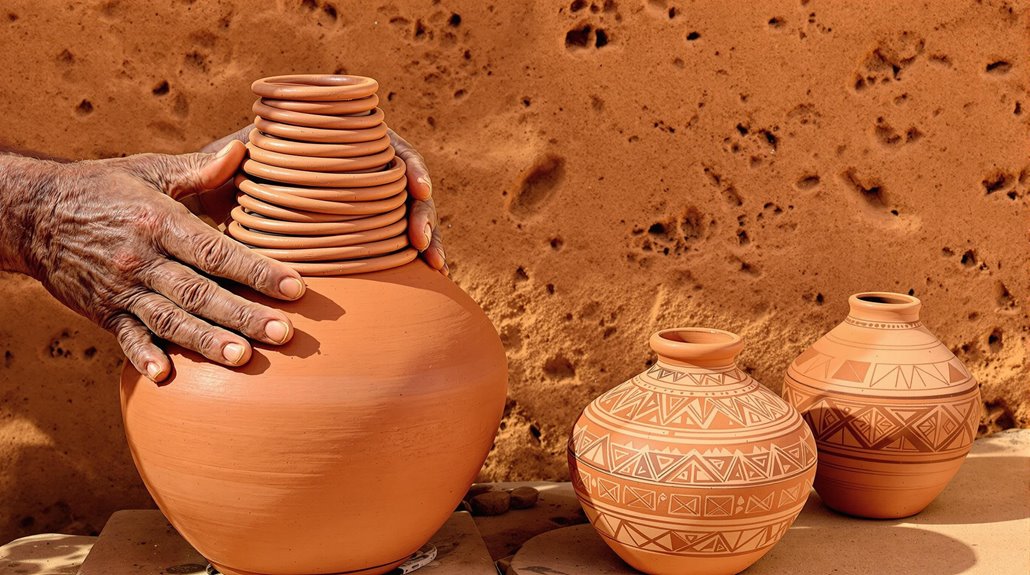
Through generations of skilled hands, coil pottery has woven itself into the cultural fabric of indigenous communities worldwide. As this ancient art form spread north through the American Southwest, communities like the Anasazi and Mogollon developed distinctive techniques that you'll still see practiced today.
When one side gets flat during the coiling process, artisans prevent the clay from collapsing by carefully adding each new coil.
This cultural preservation extends beyond mere technique. You'll find that the intricate patterns adorning these vessels carry deep spiritual meaning, reflecting indigenous worldviews and traditions.
Today, coil pottery isn't just an art form - it's a crucial economic resource that enables Native American communities to maintain their heritage while providing sustainable income. By teaching these skills to younger generations, they're ensuring their artistic legacy endures.
From Functional Vessels to Artistic Forms
While coil pots initially served purely practical needs, they've evolved into vessels of artistic expression that showcase the potter's creativity and technical abilities. As you move from basic forms to artistic creations, you'll uncover how working with clay coils can transform simple rounded shapes into stunning sculptural pieces.
- You'll start by bonding pinch techniques to create intricate surface textures, ensuring each coil is properly sticking to the clay beneath it
- The next step involves smoothing high spots and adding decorative elements as you build upward
- You can manipulate the surface of the clay to incorporate patterns, textures, and sculptural details
- Once your pot is finished, you'll see how the traditional coiling method has allowed you to blend functionality with artistic vision, creating pieces that are both practical and beautiful
Teaching and Learning Coil Building Skills
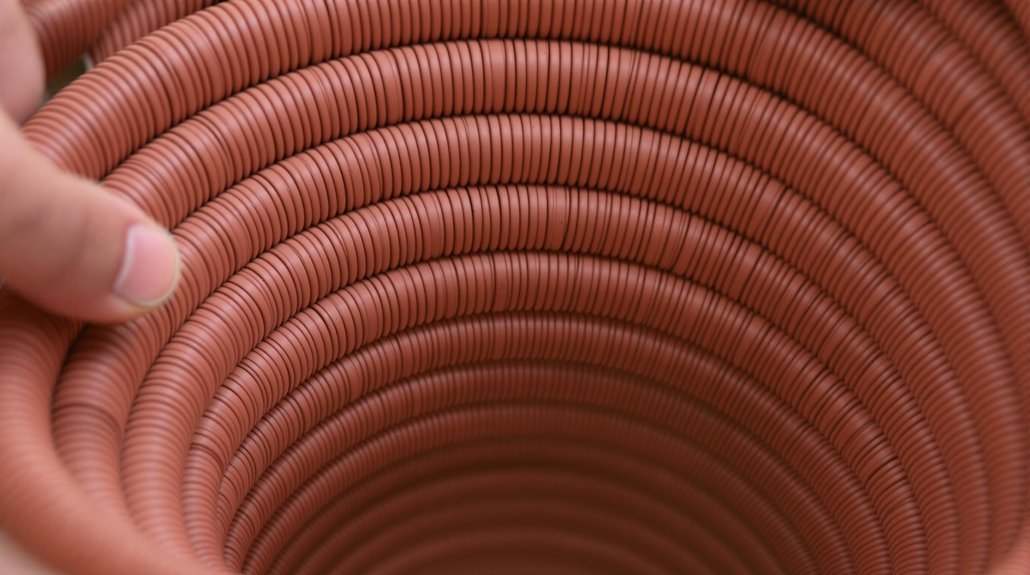
Whether you're a beginner or an experienced potter, learning coil building skills provides essential foundations for ceramics proficiency. As you roll clay back and forth between two hands, you'll develop indispensable dexterity and hand-eye coordination.
Starting with basic techniques like pinch pots and working with a slab of clay, you'll learn to create consistent coils that can be joined in opposite directions. Using tools like a gourd scraper and your index finger, you'll command the art of properly connecting coils while developing patience and precision.
The process teaches you how to make everything from flat pinch bowls to complex sculptural forms. Through hands-on practice, you'll gain an intuitive understanding of clay's properties, allowing you to experiment confidently and express your creativity through various pottery forms.

